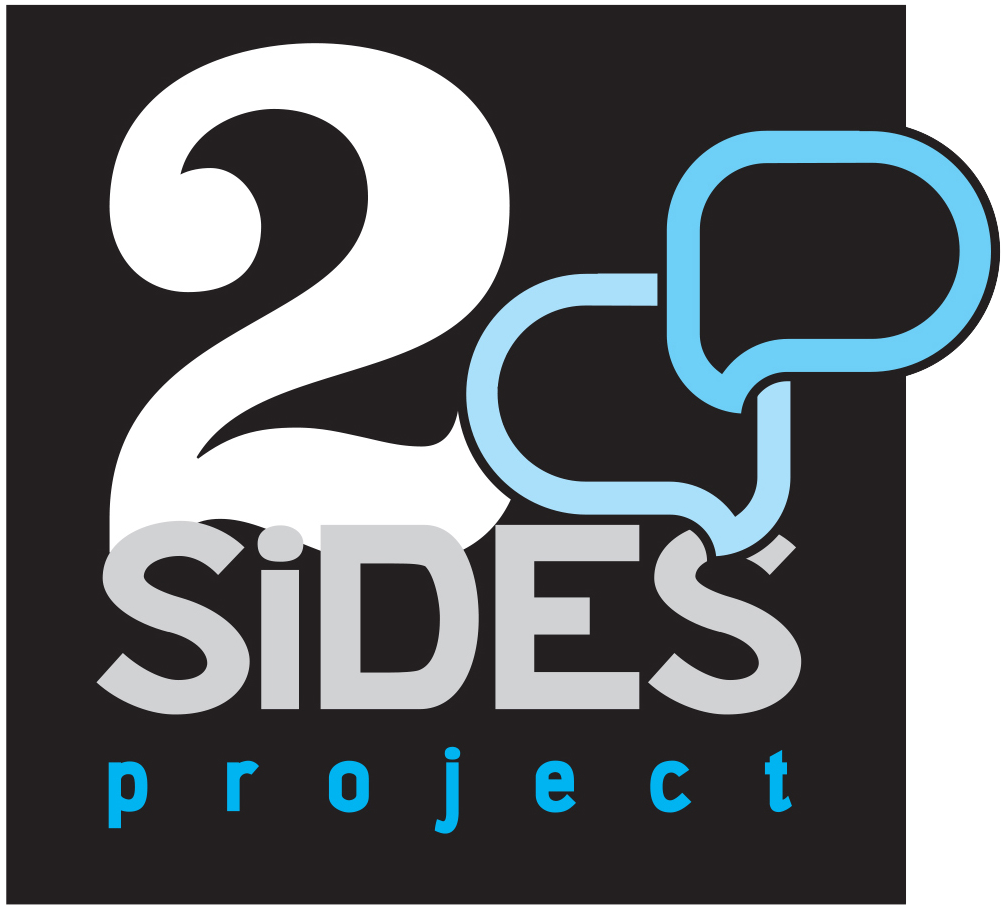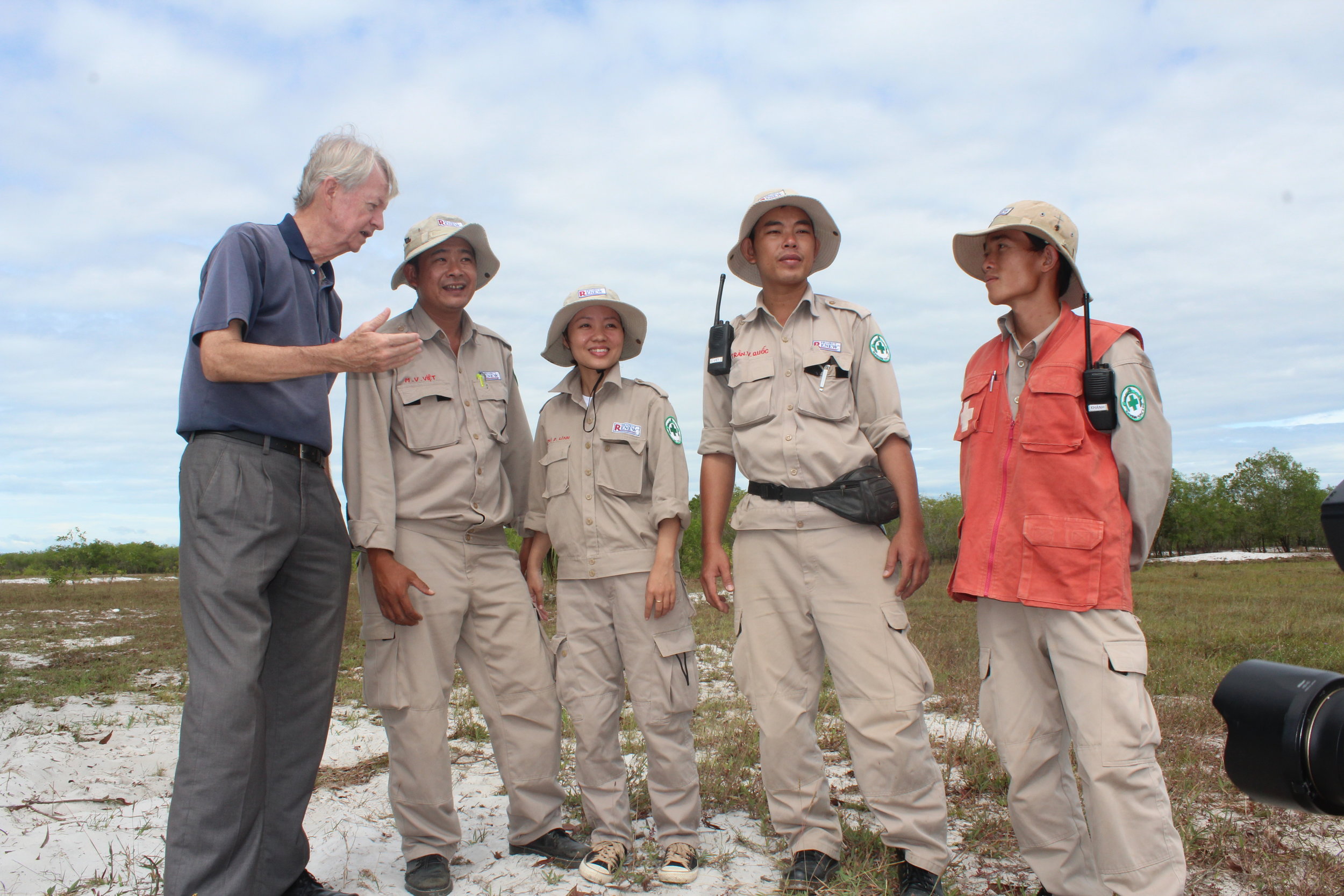Do you think you’ll stay in Hanoi for good?
Every year I think this is the year I’ll go back to Athens, Georgia. But I like what I’m doing. Project RENEW is coming closer to bringing closure to the UXO issue in terms of what can and ought to be done to make Vietnam safe. There’s another tragedy though, and that’s Agent Orange. We have to find ways to help those who are suffering at home. We have a moral obligation to bring comfort and end the suffering. We can do it. We have the means and the wherewithal. We just need the political and spiritual will to do it.
Do you have a message for other veterans on this Veterans Day?
I’ve reached a point in my life where I think my perspective about war and service and patriotism, love of country, and love of humankind, has matured at my ripe old age of 72. I no longer see any glorification in war. I only see tragedy and loss and pain. I think that veterans and families of veterans understand that better than anyone. Maybe this is a day to reflect on how we might more effectively tell others of the futility of war and do all we can to prevent future wars and diminish the population of war veterans.
To make a tax deductible donation to the nonprofit Project RENEW, visit http://landmines.org.vn/get-involved/donate-now/
Vietnamese Translation
Đánh dấu ngày cựu chiến binh với Chuck Searcy, cựu chiến binh và cũng là người sáng lập ra Dự án Renew
Chuck Searcy là một cựu chiến binh Mỹ đang sống tại Hà Nội. Vào năm 1967, ông đã làm việc trong tình báo quân đội Mỹ thuộc tiểu đoàn 519 tại Sài Gòn. Ngày nay, ông là một nhà cố vấn quốc tế cho Dự án RENEW. Đây là một tổ chức mà ông đã giúp lập ra vào năm 2001, nhằm dọn sạch các bom mìn chưa nổ ( UXO) cùng với người Việt, cung cấp hỗ trợ về y tế, khôi phục và tạo nguồn thu nhập cho các nạn nhân của bom mìn chưa nổ gây ra. Họ tập trung vào tỉnh Quảng Trị, nơi mà 97% làng mạc đã bị phá hủy bởi bom trong cuộc chiến tranh Việt Nam.
Dự án 2 Sides Projec đã được biết đến các việc làm của Dự Án RENEW khi chúng tôi ở Việt Nam, nhưng do những kế hoạch đi lại vào phút cuối đã khiến việc gặp trực tiếp ông Chuck đã không thể thực hiện được. Gần đây chúng tôi đã được trò chuyện với ông qua Skype để nói về công việc cũng như những suy ngẫm của ông về Ngày Cựu chiến binh. Chuck đã nói chuyện với chúng tôi từ văn phòng riêng của ông ở trung tâm thành phố Hà Nội. Tiếng còi xe máy từ dòng người đang hối hả trên đường đi làm việc đã hòa quện với giọng miền Nam nhẹ nhàng của Chuck ( ông đến từ Athens, bang Georgia). Đó là sựu hòa quyện hài hòa giữa người Mỹ và người Việt mà đã đánh dấu cuộc đời của ông Chuck trong hai thập kỷ qua.
Ông đã sống ở Hà Nội bao lâu rồi?
Ban đầu, tôi đã đến đây cùng với Cựu chiến binh Mỹ tại Việt Nam ( VVAF). Họ đã nhận được sự tài trợ từ Bộ ngoại giao để mang thiết bị, kỹ thuật và sự huấn luyện đến với Việt Nam để có thể giúp họ cung cấp niềng răng cho các cháu bị bệnh hay bị dị tật bẩm sinh. Và họ đã đề nghị tôi ở lại một vài năm để giúp sắp xếp chương trình. Đó đã là 20 năm trước.
Ông có phải là một trong những cựu chiến binh đầu tiên quay lại Việt Nam không?
Đã có một phái đoàn quan trọng tới Việt Nam từ sớm vào năm 1981, mà được dẫn đầu bởi ông Bobby Muller, người sáng lập ra VVAF. Họ đã đến gặp người Việt để thảo luận về sự khởi đầu và hợp tác. Điều đó đã mở ra cánh cửa cho các cuộc thảo luận dự kiến về các mối quan hệ trong tương lại. Tôi đã quay trở lại đây vào năm 1992 với tư cách là một khách du lịch. Vào thời điểm đó, tình hình giữa Hoa Kỳ và Việt Nam vẫn còn lạnh lùng.
Nhưng rồi ông quay lại. Tại sao vậy?
Tôi đã rời Việt Nam năm 1968 đầy căm hận và cay đắng bởi vì tôi đã cảm thấy cuộc chiến tranh này là một lỗi lầm bi đát, và chúng tôi đã không có được thông tin thực từ phía chính phủ Hoa Kỳ. Thực tế mà tôi thấy tại Việt Nam trong cuộc chiến tranh khác xa với những gì mà chúng tôi đã được biết trước đó. Tôi đã không căm giận hay sợ hãi người Việt. Tôi đã nghĩ rằng họ là những nạn nhân vô tội với những điều nằm ngoài tầm kiểm soát của họ. Tôi rời nơi đây với một hy vọng rằng một ngày nào đó, trong thời bình tôi sẽ quay lại. Tôi đã không biết được khi nào hay như thế nào, nhưng tôi đã không bao giờ từ bỏ ý nghĩ đó. Vào năm 1992, tôi đã gặp một người bạn trong quân đội của mình cho ăn tối và hóa ra ông ấy cũng có những ý nghĩ và ước muốn giống như tôi. Vào cuối bữa tối đó, chúng tôi đã quyết định trở về Việt Nam với tư cách là khách du lịch.
Ông đã cảm thấy như thế nào khi quay trở lại đây?
Khi chúng tôi đang bay vào Sài Gòn, chúng tôi đã nhìn xuống và có thể nhìn thấy rằng các ngôi làng nhỏ đã trở thành các vùng đô thị, thành phố và khi chúng tôi đến gần hơn, chúng tôi đã có thể nhận ra các xe máy, trâu và cánh đồng lúa. Và cả hai chúng tôi đã bị hoảng loạn. Chúng tôi đang làm gì? Chúng tôi là hai lính cũ của quân đội Hoa Kỳ, và chúng tôi đã nghĩ rằng những người này sẽ ghét chúng tôi vì những gì họ đã phải trải qua. Nhưng chỉ vài giờ sau khi hạ cánh và đi ra đường phố Sài Gòn, chúng tôi đã lấy làm kinh ngạc về sự nồng ấm và hiếu khách của tất cả mọi người. Đã không hề có sự thù oán hay căm giận đối với chúng tôi, và đó là tình hình chung trong 30 ngày mà chúng tôi đã đi du lịch xung quanh đất nước. Đã không có một ai nặng lời hay có cái nhìn ác cảm đối với chúng tôi.
Điều gì đã gây ấn tượng với ông nhất trong chuyến đi đó?
Trong cuộc chiến tranh tôi đã được giao nhiệm vụ ở Sài gòn và đã không thể ra khỏi nơi đó. Nhưng trong chuyến đi này chúng tôi đã đi từ Sài gòn đến Hà Nội và tất cả những địa điểm trên đường đi Tôi đã có thể thấy rằng Việt Nam đang ở trong tình cảnh eo hẹp. Đường xá, lưới điện, đường dây điện thoại, tất cả đang ở trong một tình trạng tồi tệ. Vẫn còn hố bom rải rác trên toàn đất nước. Người dân nghèo và lệnh cấm vận vẫn còn hiệu lực. Nhìn thấy đất nước tươi đẹp này vật lộn trong khó khăn là điều rất khó đối với tôi. Tôi đã suy nghĩ rằng làm thế nào để mình có thể quay lại và giúp họ khôi phục.
Vậy là ông đã bắt đầu với chương trình của VVAF. Thế rồi điều gì đã đưa ông đến với dự án RENEW?
Trong những năm tôi làm việc với chương trình VVAF, tôi luôn có những câu hỏi về nguyên nhân của một số dị tật và khó khăn trong việc đi lại mà chúng tôi thấy ở người Việt và cái gì là nguyên nhân dẫn đến những vấn đề này. Tôi đã nhận thức được vấn đề về chất độc màu da cam với tư cách là một cựu chiến binh nhưng tôi cũng nhận ra là chúng tôi không biết nhiều về nó. Và hàng tuần có những câu chuyện trên báo chí về những đứa trẻ bị bom chùm bắn văng đi. Khi tôi tìm hiểu thêm về điều này, tôi đã được biết rằng kể từ sau khi chiến tranh kết thúc, đã có 100,000 trẻ em và người lớn bị giết bởi UXO (bom mìn chưa nổ) .
Người Việt đã không thúc bách trong chuyện này. Họ đã rất cẩn trọng và lịch sự và nói rằng họ đã chắc chắn rằng một lúc nào đó phía Hoa Kỳ sẽ làm điều đúng và đó là giúp đỡ họ.
Đã có nhiều tổ chức phi chính phủ đến để giải quyết vấn đề này, nhưng chúng tôi đã chưa hợp tác với nhau trong chuyện này. Cuối cùng thì chính phủ Việt Nam đã đề nghị chúng tôi làm việc cùng với nhau qua một phương pháp hội nhập để giải quyết vấn đề bom mìn. Điều đó đã đưa ra thách thức. Vào năm 2000, một phái đoàn của Quỹ tưởng niệm cựu chiến binh Việt Nam đã tới Việt Nam. Vào cuối chuyến thăm của họ, họ đã hỏi tôi rằng họ có thể làm được điều gì không? Tôi đã gợi ý với họ rằng họ có thể tập trung vào lời đề nghị của phía Việt Nam đó là hợp tác , và sử dụng vùng Quảng Trị như là một nơi thử nghiệm. Họ đã đồng ý và quyên góp được 500,000 đô la để bắt đầu. Đó là nguồn gốc của Dự án RENEW. Chúng tôi đã làm việc với chính quyền địa phương và nhân viên của họ, những người mà vẫn đang dẫn dắt dự án này với sự ủng hộ và giúp đỡ về kỹ thuật của chúng tôi.
Ngày nay nhiệm vụ của ông là gì ạ?
Để biến Quảng Trị trở thành một tỉnh an toàn, chúng tôi sử dụng các đội dọn bom, cung cấp chương trình giáo dục về nguy cơ rủi ro cho trẻ em và người lớn để họ có thể biết cách giữ an toàn, báo cáo các nguy cơ, cung cấp sự giúp đỡ cho các nạn nhân. Giúp đỡ những người đã bị thương hồi phục, giúp đỡ về y tế, hay giáo dục họ cách kiếm thu nhập.
Những hiệu quả việc làm của Dự án RENEW là gì?
Số tai nạn tại Quảng Trị đã giảm từ 70-80 vụ một năm vào năm 2001 đến một vụ vào năm 2016. Mặc dù 2016 được ghi nhận là có ít tai nạn xảy ra nhất từ năm 1975, không may là một trong những đội trưởng của chúng tôi đã mất trong khi tháo dỡ UXO (bom mìn chưa nổ) . Anh ấy là một trong những người tốt nhất của chúng tôi. Đó thực sự là một thảm kịch.
Trong những năm qua, có một câu chuyện nổi trội nào mà đã cho thấyđược giá trị việc làm của Dự án RENEW không ạ?
Chúng tôi đã cung cấp khoảng 1200 bộ tay chân giả cho những người bị mất chân tay trong tai nạn UXO (bom mìn chưa nổ) và trong số đó có một người phụ nữ dân tộc thiểu số sống trên vùng núi ở Quảng Trị. Tôi đã đi cùng đội khi họ mang chân mới đến cho cô ấy. Tôi đã hỏi cô ấy bao nhiêu tuổi? Cô ấy đã không biết. Tôi đã hỏi rằng cô ấy đã bị mất chân trong trường hợp nào. Cô ấy đã bảo tôi rằng việc đó xảy ra vào năm 1971 và do bom thả xuống từ máy bay. Cô ấy nói rằng các máy bay đã bay rất thấp và cô ấy có thể nhìn thấy người ở bên trong. Cô ấy chĩa cái tẩu về phía tôi, cười và nói rằng: “ Họ trông giống như ông vây.” Tôi đã không thể tin được cô ấy có thể hài hước như vậy. Cô ấy đã dùng nạng, và lần đầu tiên trong 40 năm cô ấy đã có thể đứng lên và đi bằng hai chân. Điều đó thật là tuyệt vời.
Ông đã sống với người Việt trong một thời gian dài. Ông đã học hỏi được điều gì từ họ?
Lúc nào tôi cũng cảm thấy một sự so sánh, so sánh về cái gì đã làm chúng ta khác nhau và cái gì đã gắn bó chúng ta lại với nhau. Tôi nghĩ rằng văn hóa Việt Nam là rất khác biệt. Điều đáng kinh ngạc đối với tôi đó là thái độ phổ biến chung của người Việt là sự tha thứ, và chấp nhận những điều mà bạn không thể thay đổi được, sự mong muốn học hỏi từ các kinh nghiệm đó và mang lại sự thay đổi để các thế hệ sau có một tương lai tốt hơn. Họ không thấy được lợi ích gì mang lại từ sự tức giận và cay đắng đối với người khác cho bản thân mình. Họ tin tưởng rằng chúng ta phải chấp nhận quá khứ mặc dù cho nó có đau đớn đến nhường nào, nó cũng không nên được sử dụng làm vũ khí chống lại người khác hay làm thiệt hại đến chính cuộc sống của mình. Đó là thái độ đã ăn sâu vào cuộc sống và văn hóa của người dân ở đây. Ngài Đại Sứ Peterson, người đã bị bắn rơi và bị giam 6 năm trong nhà tù Hanoi Hilton và sau đó quay lại để trở thành Đại sứ Hoa Kỳ đầu tiên tại Việt Nam sau khi chiến tranh kết thúc, biết một vài thứ về điều này. Một lần tôi đã hỏi ông ấy là làm thế nào mà ông có thể luôn có một thái độ lịch thiệp, xây dựng một mối quan hệ đáng chú ý và tình bạn với người Việt Nam mặc dù ông đã trải qua những điều khủng khiếp trong quá khứ. Ông đã nói với tôi rằng: “ Tôi đã có thể là tù nhân trong suốt quãng đời còn lại của mình nếu như tôi vẫn tức giận và cay đắng. Nhưng cái ngày mà tôi bước ra khỏi cái nhà tù ấy, tôi đã là một người tự do và tôi có dự định giữ sự tự do ấy.” Ông ấy đã hiểu một điều mà người Việt Nam có lẽ cảm thấy trong trái tim và xương cốt của mình.
Ông có nghĩ rằng mình sẽ sống ở Hà Nội mãi mãi không ạ?
Hàng năm tôi nghĩ rằng năm nay mình sẽ quay lại Athens, bang Georgia. Nhưng tôi yêu thích công việc của mình. Dự án RENEW đang tiến đến việc đóng lại vấn đề về UXO (bom mìn chưa nổ) trong khía cạnh những gì có thể và nên được làm để làm cho Việt Nam an toàn. Có một bi kịch khác, đó là chất độc màu da cam. Chúng ta phải tìm cách để giúp những người phải trải qua đau khổ ở nhà. Chúng ta có trách nhiệm đạo đức để mang đến sự an ủi và kết thúc sự đau khổ. Chúng ta có thể làm được điều đó. Chúng ta có đủ phương tiện và tiền bạc. Chúng ta chỉ cần ý chí về chính trị và tinh thần để làm điều đó.
Ông có lời nhắn nhủ gì đến các cựu chiến binh khác trong ngày Cựu chiến binh này không ạ?
Tôi đã đến thời điểm của cuộc đời khi mà góc nhìn của tôi về chiến tranh, nghĩa vụ và lòng yêu nước, tình yêu nước, và tình yêu cho đồng loại, đã được trưởng thành ở lứa tuổi chín muồi 72 của mình. Tôi không còn nhìn thấy hào quang trong chiến tranh nữa. Tôi chỉ nhìn thấy các bi kịch, sự mất mát và đau đớn. Tôi nghĩ rằng các cựu chiến binh và gia đình của họ hiểu điều này hơn ai hết. Tôi nghĩ rằng đây là một ngày để chúng ta suy ngẫm lại rằng làm thế nào để mình có thể nói cho người khác biết về sự vô ích của chiến tranh và làm mọi thứ chúng ta có thể để ngăn những cuộc chiến tranh trong tương lai và giảm đi số lượng cựu chiến binh chiến tranh.
Để đóng góp cho các dự án phi lợi nhuận của Dự án RENEW ( được trừ khấu thuế) hãy truy cập vào: http://landmines.org.vn/get-involved/donate-now/





































































